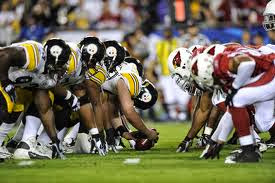by Tom McDermott
(This submission of a repost and can be found at its original home here. ED)
I've added a few more things to the Snapshots this week, namely, correlation values. I thought it might be interesting to see how the various Expected Points totals correlate with Margin of Victory and Win Percentage. For those of you unfamiliar with correlation (I know I was until I started getting into all this stat stuff): a correlation of 1.0 is perfect correlation, a correlation of 0.0 is no relationship. As far as Win Percentage, it makes sense that the offense and defense EPA correlations are the same - the way EPA works, for every point gained on offense, there is a point lost on defense (or vice versa). But I was surprised to see the higher Special Teams correlation. I'm not sure this means anything yet - the numbers will most likely regress as the season goes on. But it is interesting to note that the top three teams in terms of Margin of Victory - Denver, Kansas City, and Seattle - also have the top three special teams EPA scores.
Friday, October 18, 2013
| [+/-] |
NFL Team snapshots - Week 6 |
| [+/-] |
Conversion percentage VS win percentage |
by Andy Steiner
The intent of this study is to see how much more likely strong teams are to convert third or fourth downs compared to weak teams.
In this study I plot various conversion probabilities of 3rd and 4th downs, as a function of team strength (and distance to go). The measure of team strength that I use is the offense’s end of season winning percentage minus the defense’s end of season winning percentage. For the purpose of this study offensive conversion percentage is the number of times a team coverts a third and fourth down divided by the number of attempts to make that conversion. And of course the defensive conversion percentage is the number of times the defense holds on third and fourth down divided by the number of attempts.
So my X and Y variables are:
X =(Offense end of season winning percentage) – (Defense end of season winning percentage)
Y = 1 (successful conversion or TD), 0 (failed conversion)
I know there are much better ways to measure how good an offense or defense is than the end of season winning percentage; but I think this is a good first step. I also think it’s accessible. If a coach wants to get a better idea of how likely they might be to convert in a certain situation the win-loss records might be the first thing they think of. It’s probably how they think of their team strength – “we are a 12 and 4 team”.
I then plot a linear fit from all the 1 and 0 y data points. This means I am assuming that the “true” probability of conversion is a linear function of team W-L record.
I use data from 2002 to 2011 (regular season plus playoffs). I use most of the “normal football” assumptions, but not all. I was slightly more aggressive with time, allowing the 2nd quarter to be counted all the way up to 7 minutes left. The 4th quarter is excluded; all of the 1st and 3rd quarters are included. The plays are only included if the line of scrimmage is between a team’s own 25 and the opponents 20. The score differential is limited to 10 points.
The intent of this study is to see how much more likely strong teams are to convert third or fourth downs compared to weak teams.
In this study I plot various conversion probabilities of 3rd and 4th downs, as a function of team strength (and distance to go). The measure of team strength that I use is the offense’s end of season winning percentage minus the defense’s end of season winning percentage. For the purpose of this study offensive conversion percentage is the number of times a team coverts a third and fourth down divided by the number of attempts to make that conversion. And of course the defensive conversion percentage is the number of times the defense holds on third and fourth down divided by the number of attempts.
So my X and Y variables are:
X =(Offense end of season winning percentage) – (Defense end of season winning percentage)
Y = 1 (successful conversion or TD), 0 (failed conversion)
I know there are much better ways to measure how good an offense or defense is than the end of season winning percentage; but I think this is a good first step. I also think it’s accessible. If a coach wants to get a better idea of how likely they might be to convert in a certain situation the win-loss records might be the first thing they think of. It’s probably how they think of their team strength – “we are a 12 and 4 team”.
I then plot a linear fit from all the 1 and 0 y data points. This means I am assuming that the “true” probability of conversion is a linear function of team W-L record.
I use data from 2002 to 2011 (regular season plus playoffs). I use most of the “normal football” assumptions, but not all. I was slightly more aggressive with time, allowing the 2nd quarter to be counted all the way up to 7 minutes left. The 4th quarter is excluded; all of the 1st and 3rd quarters are included. The plays are only included if the line of scrimmage is between a team’s own 25 and the opponents 20. The score differential is limited to 10 points.
Subscribe to:
Comments (Atom)





